Seeds of many cultures before landing in the ground need preliminary preparation, the main stages of which disinfection and soaking. Compositions for soaking are different, some of them can be purchased in the finished form, some - prepare themselves. The procedure itself allows sponsors to get through the shell faster, and also reduces the risk of obtaining weak and painful crops. In this article we will talk about soaking seeds before landing.
Disinfection of seed material
In order for the future seedlings to be healthy, and the risk of developing diseases was minimized, the sowing material first should be treated with a solution of a disinfectant. The most popular of them today are manganese water and hydrogen peroxide.
Soaking seeds in manganese car is carried out in the following way:
- Cultural seeds are put in a small gauze or tissue bag.
- From a slightly warm boiled water and manganese crystals, a solution of saturated-pink color is prepared. It should also be taken into account that the manganese solution should not be too concentrated, otherwise the seeds may die.
- When the fluid is ready, the bag with grains is immersed in it and kept for 15 minutes.
- Then the seeds are taken out, shifted from the fabric into a small bowl and washed with a stream of cool boiled water.
Soaking seeds in hydrogen peroxide occurs in a similar way:
- The grains of the chosen culture are also folded into the bag of gauze or thin tissue, and then dip the hydrogen peroxide solution. The ratio of liquid and seeds should be 1: 1.
- After about 20 minutes, the bag is taken out, the seeds are shifted into a small vessel and washed.
- Then the grains are folded on the napkin and leave to dry until they get ray.
- Seeds of some types of vegetables can be mashed in 0.4% solution for 12 hours. The grains of tomatoes and beets are kept in solution of the same concentration during the day. This method allows to reduce the amount of nitrates in vegetables.
Sounds of soaking seeds before landing
Most often, those seeds that are covered with a solid shell are subjected. Such cultures include cucumbers, tomatoes, zucchini, pepper, pumpkin, beets and watermelon. In this case, soaking allows you to soften the outer shell of seeds and facilitate germination germinal sprouts.
Before sowing in the ground, it is also customary to soak seeds with a high content of essential oils. Such cultures include carrots, parsley, celery, parsnips, dill. Washing a certain number of essential oils from seeds also accelerates the process of grain germination.
Water for soaking should be suitable quality. An ideal option is thawed water, but when it can be bought in the store a simple purified water without gas. As for the dishes, a wide saucer is most suitable for the procedure.
Let's challenge more in how to pump seeds before landing:
- Before you soak seeds, they are first decomposed on a segment of gauze, folded in several layers. The grains are then covered with the second gauze in the same segment and shift the resulting envelope into a wide plate or saucer.
- Then the seeds are poured with water, the temperature of which should be about 30-35 ° C.
- Depending on whether the seeds of which culture are subjected to soaking procedure, the volume of fluid should be calculated. For example, when the grains are soaked, melon, watermelon, tomatoes, cucumbers, pumpkins or zucchini, the amount of water should be 50% of the volume of seeds. For such crops, as dill, parsley, celery, beets, peas, beans and beans This indicator should be 100%.
- Water flooded seeds are hiding in a dark place, where the air temperature is maintained at 20-25 ° C. Some gardeners prefer to create seeded greenhouse conditions, for which they additionally turn the saucer with a plastic film.
- The duration of soaking largely depends on the type of culture. For example, grains of cucumbers, tomatoes, watermelons, melons, lettuce, beets and zucchini are kept in water no longer than 18 hours. For carrots, dill, onions, parsley and celery this time is 48 hours. Those plants that have torrential seeds of large size is made to soak no longer than 2-4 hours. It is worth noting that it is not worth a longer than the recommended period in the liquid in the liquid, otherwise the grains can be simply controversial.
Biologically active solutions for soaking seeds
To date, you can find special biologically active substances that accelerate the process of germination of seeds. Consider these formulations in more detail:
- "Epin" is a substance produced from plant components. Soaking seeds in Epina allows cultures to become more resistant to unfavorable environmental factors. Such plants are less afraid of frosts or lack of sunlight.
- Zircon is produced on the basis of cycyrian acid, which is contained in such a plant as Echinacea. Chicory acid stimulates the growth of seedlings, and also speeds up the process of the root formation.
"Humat" is a drug based on sodium or potassium slices of humic acid. The solution of "Gumin" is a nutrient that accelerates germination of seeds. 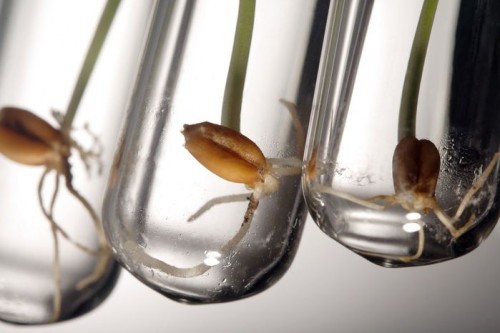
Folk recipes for soaking seeds
Those who do not want to enjoy ready-made purchased tools for clearing seedlings can prepare a solution independently. Recipes of folk remedies for soaking seeds We will consider below:
- Soaking seeds in Aloe juice is considered a fairly common procedure. The thing is that the juice of this plant is a kind of natural immunostimulator, which makes the seedlings more strong and stable in front of the disease. Among other things, Aloe stimulates the process of growing cultures. Before preparing a solution for soaking, with the aloe bustle, you need to cut down the lower leaves, wrap them into a dry napkin, a fabric or a newspaper, and then put it in the refrigerator for 2 weeks. After this time, it is possible to squeeze juice from the leaves. It is recommended to do this manually, without using metal dishes or other kitchen utensils from the metal. Then aloe juice is diluted with water in a 1: 1 ratio and put gauze into it with seeds wrapped in it. In such a solution of grain, it is supposed to withstand about 24 hours.
- Soaking seeds in the ash solution allows plants with minerals. To prepare infusion, you need to mix 2 tbsp. Wood or straw ash with 1 l pure boiled water. This fluid should be insisted at least 2 days, after which it can be mastered the seeds of cultures. As a rule, in such a solution of grains withstand about 3-6 hours.
- Mushroom decoction is another good folk remedy for soaking seeds. The decoction is preparing from dried mushrooms, it is believed that they contain the maximum number of trace elements needed by cultures for good growth. To prepare such a means, dried mushrooms should be pouring steep boiling water, cover with a lid and leave until the liquid cools. Then the gauze envelope with seeds are immersed in this decoction and leave there for 6 hours.
- To stimulate the growth of seedlings, a solution of honey is also used. To prepare it, spread in 250 ml of pure boiled water 1 tsp. Honey. Pour the liquid in the saucer, put a tissue bag with grains and leave the seed for about 6 hours.
- Potato juice is also considered good people to the means, which is used to germinate seeds. To cook it, a few purified raw potatoes must be pre-freeze in the freezer. Then the potatoes are removed from the freezer and leave on the table until completely thawing. After that, the juice is pressed and the seeds of cultures are soaked in it. Sowing material is kept in a similar means for 6-8 hours.
- A comprehensive solution for soaking seeds is preparing easy. Initially, make an oloc solution according to the method described above. Then take 2 handstone dry onion husks, fill it with 1 l of steep boiling water and mix with ash sol. The ratio of liquids should be equal. Then add 1 g of manganese to a complex solution, 0.2 g of boric acid and 5 g of soda. Mix all the components until complete dissolution and immerse the seeds to 5-6 hours.
Before soaking seeds in any of the above-described funds, it is desirable first to hold the grains in purified water 1-2 hours. When the seed material is processed by the desired solution, the seeds must be washed and dried to a bulk state. After all these procedures, the plants will be ready for landing.

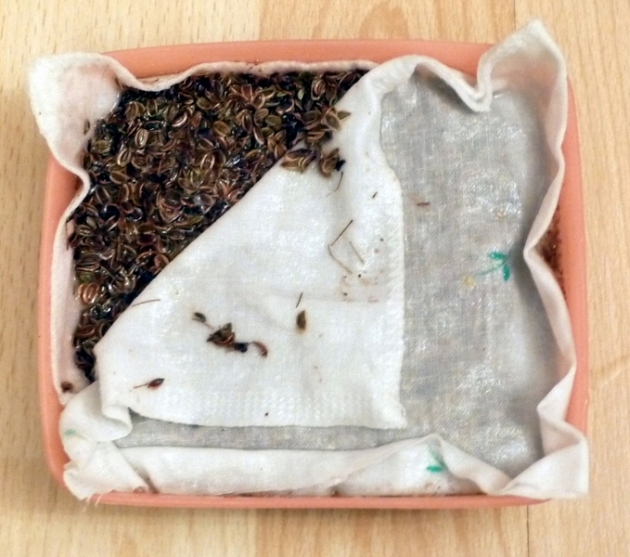
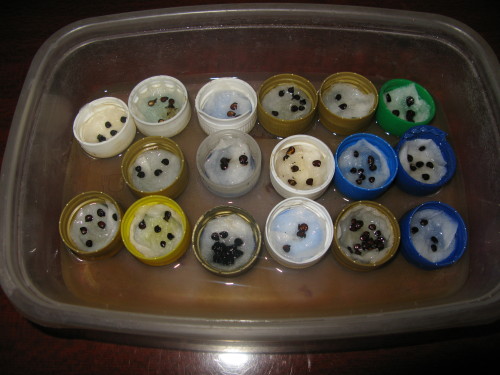
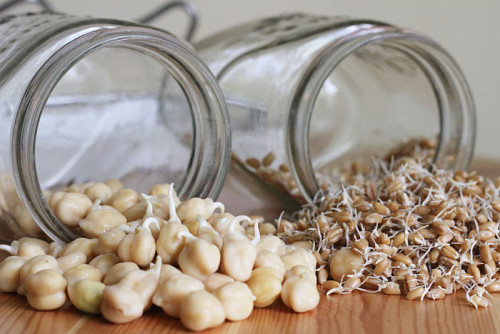
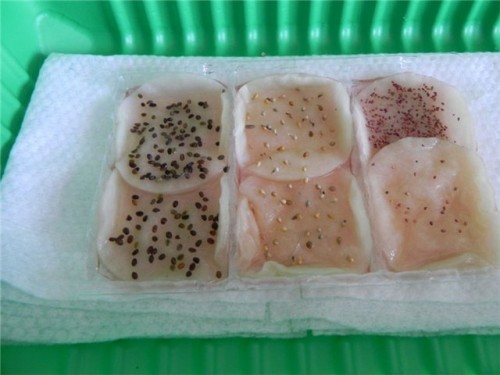












 Start a discussion ...
Start a discussion ...